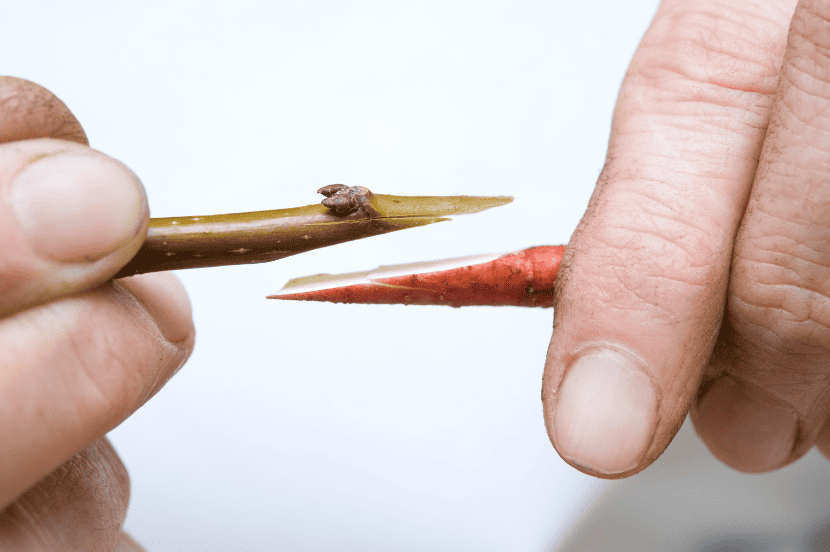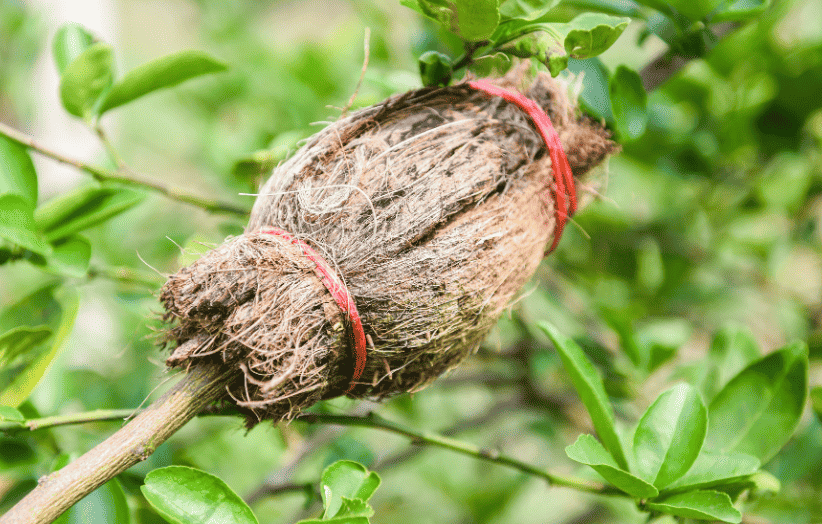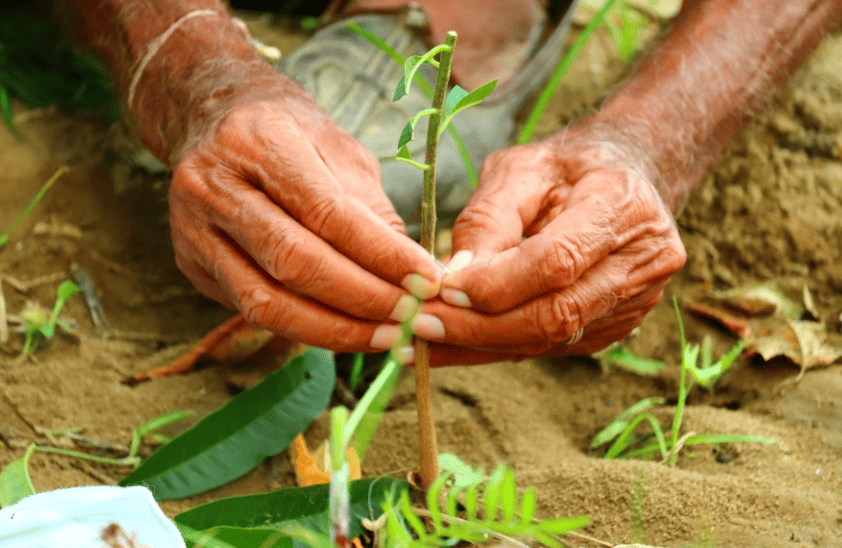Plant propagation is the process of creating new plants from existing ones. There are several methods of plant propagation, including seed germination, division, layering, and grafting. Grafting is a popular technique used by horticulturists and gardeners to propagate plants that do not root well from cuttings.
Grafting is a technique that involves joining the stem or bud of one plant onto the rootstock of another plant. The result is a new plant that has the desirable characteristics of both plants. The rootstock provides the new plant with a strong root system, while the scion provides the new plant with the desired characteristics, such as fruit size, color, and flavor. Grafting can also be used to create ornamental plants with unique shapes and colors.
Grafting is a complex process that requires skill and knowledge. It is important to choose the right rootstock and scion, as well as the right time of year to graft. Grafting is commonly used in the production of fruit trees, such as apples, pears, and citrus. It is also used to produce ornamental plants, such as roses and camellias.
Understanding Plant Propagation
Plant propagation is the process of creating new plants from existing ones. There are two main types of plant propagation: sexual and asexual propagation. Sexual propagation involves the use of seeds, while asexual propagation involves the use of vegetative parts of the plant, such as cuttings or grafts.
Types of Plant Propagation
Sexual propagation is the most common form of plant propagation and involves using seeds. The plant’s flowers produce seeds and contain the genetic material necessary for developing a new plant. Sexual propagation is used to create new varieties of plants and is often the preferred method for producing large quantities of plants.
Asexual propagation, on the other hand, involves the use of vegetative parts of the plant, such as cuttings or grafts. This type of propagation produces plants genetically identical to the parent plant and is used to maintain desirable traits in a plant. Using asexual propagation is also used to create new varieties of plants that do not reproduce well through sexual propagation.
Role of Grafting in Propagation
Grafting is like the matchmaker of the plant world, where two different plant parts come together for a botanical fusion dance! Picture this: the scion, the part of the plant with all the cool traits you desire, is introduced to the rootstock, the unsung hero providing the root system. They meet, make a cut, and are bound together in a plant union ceremony. This technique is a lifesaver for plants that don’t play nice with cuttings or for those where the roots need a boost.
Fruit trees and fancy ornamental plants especially love this matchmaking magic. It’s like a VIP pass to maintain the best qualities, create new plant blends that aren’t great at making plant babies the usual way, and even boost overall plant health and productivity with those superstar root systems. So, grafting isn’t just about plant love stories; it’s about creating a garden of plant wonders!
Fundamentals of Grafting

Grafting is a common plant propagation method involving joining the tissues of two plants to form a single plant. This technique propagates plants that do not root well from cuttings, utilize superior root systems, or maintain clonal production. Propagation through grafting is often used in fruit tree cultivation, where it allows growers to combine the desirable qualities of two different trees into a single tree that produces high-quality fruit.
Grafting Terminology
Grafting, let’s dive into the plant matchmaking glossary! First up, the scion – the glamorous upper slice of the graft, packed with the fruity personality you desire. On the flip side, meet the rootstock – the solid base, lending its robust root system and sturdy support to the star scion.
Now, the graft union is where the magic happens, the spot where Scion and Rootstock lock arms for a green partnership. But don’t forget the cambium – the backstage growth maestro, hiding just under the tree’s bark, orchestrating the symphony of new tissues.
So, when it comes to grafting, it’s not just about sticking things together; it’s a green opera of scions, rootstocks, graft unions, and cambiums creating horticultural harmony!
Physiological Stages and Compatibility
Grafting requires that the scion and rootstock be compatible with each other, both in terms of their physiological stages and their genetic makeup. The best time to graft is during the dormant season when the tree is not actively growing. This is because the cambium is less active during this time, which makes it easier to make a clean cut and join the scion and rootstock together.
The compatibility of the scion and rootstock is also essential. The two plants must be of the same species or genus and must be physiologically similar enough to allow for the successful formation of a graft union. If the plants are not compatible, the graft will fail, and the scion will not grow.
Grafting Techniques
Grafting is a popular plant propagation method involving joining parts from two or more plants to form a single plant. Several grafting techniques are used in horticulture, each with its advantages and disadvantages. Here are some of the most commonly used grafting techniques:
Bud Grafting
Bud grafting, also known as budding, involves removing a bud from one plant and inserting it into a small slit in the bark of another plant. This technique is commonly used for fruit trees and roses. Bud grafting can be done in the spring or summer when the bark is slipping.
Cleft Grafting
Cleft grafting is a technique that involves making a cut in the stem of the rootstock and inserting a scion into the cut. This technique is commonly used for fruit trees and ornamental trees. Cleft grafting is usually done in the winter or early spring when the plants are dormant.
Whip Grafting
Whip grafting involves cutting the rootstock and the scion at an angle and then joining the two pieces together. This technique is commonly used for fruit trees and ornamental trees. Whip grafting is usually done in the winter or early spring when the plants are dormant.
Bridge Grafting
Bridge grafting involves using a scion to bridge a gap in the bark of a tree. This technique is commonly used to repair damage caused by animals or weather. Bridge grafting can be done in the spring or summer when the bark is slipping.
Approach Grafting
Approach grafting involves joining two plants together by making a cut in the bark of both plants and then binding them together until they grow together. This technique is commonly used for plants that are difficult to propagate by other methods. Approach grafting can be done in the spring or summer when the bark is slipping.
Grafting requires specific tools and materials such as a grafting knife, grafting wax, and grafting tape. It is important to use clean and sharp tools to prevent the spread of disease. The success of grafting also depends on the timing and the physiological stage of plant growth.
Grafting Tools and Materials

Grafting is a popular plant propagation technique that requires the use of specific tools and materials to achieve successful results. Here are some important things to consider when selecting the right tools and materials for grafting.
Selecting the Right Tools
One of the most important tools for grafting is a sharp knife. A grafting knife is designed with a thin, straight blade that allows for precise cuts. Other types of knives, such as pruning knives or utility knives, can also be used for grafting, but they may not be as effective as a dedicated grafting knife.
In addition to a knife, grafting tape or strips are also essential for grafting. These materials are used to hold the graft in place and protect it from drying out. Grafting tape is a stretchy, self-adhesive tape that is easy to use and provides a secure hold. Grafting strips are made of rubber and are also effective at holding the graft in place.
Other useful tools for grafting include a grafting wax or sealant, which is used to cover the graft and prevent moisture loss. Masking tape or electrical tape can also be used to hold the graft in place and protect it from drying out.
Using Grafting Materials
Embarking on the grafting adventure? Let’s talk materials!
First off, scions – the superstar branches or shoots ready for their plant rendezvous. Rootstocks play matchmaker, being the sturdy base plants onto which the scions are set. It’s a green love story!
Now, the backstage heroes: grafting wax, the moisture guardian. Imagine a protective cloak applied to the graft union, keeping it fresh and vibrant. Dry grafts, no thank you!
Enter grafting tape or strips – the trusty bodyguards. Wrapped snugly around the graft union, they’re the defenders against the dreaded drying-out dilemma, ensuring a secure embrace.
In a nutshell, gear up with essentials: a sharp knife, grafting tape, and grafting wax. Choose compatible scions and rootstocks for a horticultural match made in heaven. Ready, set, graft!
Optimal Conditions for Grafting

Grafting is a common method of plant propagation that allows gardeners and farmers to produce new plants with desirable traits. However, grafting requires specific conditions to ensure that the process is successful. In this section, we will discuss the optimal conditions for grafting, including timing, temperature, moisture, and light.
Timing and Temperature
Timing and temperature are critical factors in grafting. The ideal time for grafting is when the plants are dormant or in early spring when the buds are starting to swell. During this time, the plants are less likely to suffer from transplant shock, and the tissues are more receptive to grafting. The temperature during grafting should be between 60-75°F (15-24°C) to ensure that the scion and rootstock tissues fuse together correctly.
Moisture and Light
Moisture and light are also important factors in grafting. The plants should be well-watered before grafting to ensure that they are not stressed and the tissues are plump. After grafting, the plants should be kept in a humid environment to prevent the tissues from drying out. This can be achieved by covering the plants with a plastic bag or placing them in a humidity dome.
Light is also essential for grafting. The plants should be kept in a bright, indirect light to promote growth and healing. However, direct sunlight should be avoided as it can cause the plants to overheat and dry out.
In conclusion, grafting is a useful method of plant propagation, but it requires specific conditions to be successful. The optimal conditions for grafting include timing, temperature, moisture, and light. Gardeners and farmers must pay close attention to these factors to ensure that their grafting efforts are successful.
Caring for Grafted Plants

Grafting is an effective method of plant propagation that joins plant parts from different plants together so they will heal and grow as one plant. Once the grafting process is complete, the newly grafted plant requires proper care to ensure its survival and growth.
Aftercare of Graft Union
After the grafting process, it is important to monitor the graft union for any signs of damage or stress. The graft union is the point where the scion and the rootstock are joined together. It is crucial to maintain a good seal on the graft to protect it from humidity loss. Expansion and temperature changes over time may crack the wax seal or make improper tying apparent. Therefore, it is important to recheck the wax in three to five days and reapply it if necessary The Spruce.
The callus, which is a mass of undifferentiated cells, will form around the graft union and help repair any damage. It is important to avoid touching or disturbing the callus during the healing process. The plant should be kept in a warm, humid environment to promote the growth of the callus and the formation of new roots Mississippi State University Extension Service.
Managing Plant Growth
Once the graft has taken and the plant has started to grow, it is important to manage its growth to ensure its health and longevity. The plant should be pruned regularly to promote healthy shoot and leaf growth. It is important to remove any diseased or damaged leaves to prevent the spread of disease to the rest of the plant.
To promote healthy plant growth, it is important to provide the plant with proper nutrients and water. A balanced fertilizer should be applied regularly to provide the plant with the necessary nutrients. Over-fertilizing can be harmful to the plant, so it is important to follow the fertilizer manufacturer’s instructions FineGardening.
Common Grafting Challenges

Grafting is an effective method of plant propagation that involves joining the tissues of two different plants to create a single plant. However, it is not without its challenges. In this section, we will discuss some of the common challenges that gardeners face when grafting plants.
Dealing with Disease and Pests
One of the biggest challenges when grafting plants is dealing with disease and pests. If the plants being grafted are not disease-resistant, they may be vulnerable to infections that can weaken or kill the plant. Similarly, pests can attack the plant and cause significant damage.
To prevent disease and pest problems, gardeners should choose disease-resistant rootstocks and scions. They should also practice good sanitation by cleaning their tools and work area before and after grafting. In addition, it is important to monitor the plants for signs of disease and pests and take appropriate action if necessary.
Incompatibility Issues
Another challenge when grafting plants is incompatibility. Incompatibility occurs when the scion and rootstock are not compatible with each other. This can result in poor growth, weak plants, or even death.
To prevent incompatibility issues, gardeners should choose compatible scions and rootstocks. They should also ensure that the graft union is strong and secure. In addition, it is important to monitor the plants for signs of incompatibility and take appropriate action if necessary.
Overall, grafting plants can be a challenging but rewarding process. Gardeners can successfully propagate plants through grafting by understanding the common challenges and taking appropriate action.
Applications of Grafting

Grafting is a technique that has been used for centuries to propagate plants. It is a process by which a piece of one plant is attached to another plant, allowing the two to grow as one. This technique is commonly used to create new plants that have desirable characteristics, such as disease resistance, increased yield, or improved quality.
Fruit Tree Cultivation
Grafting is commonly used in fruit tree cultivation to produce trees that have desirable fruit characteristics. For example, apple trees can be grafted to produce different cultivars or varieties on the same tree. This allows growers to produce multiple types of apples on a single tree, increasing fruit and reducing the amount of space needed.
Ornamental and Woody Plant Grafting
Grafting is also used in the cultivation of ornamental and woody plants. This technique can be used to produce plants with unique characteristics, such as variegated leaves or unusual flower colors. Conifers, for example, can be grafted to produce dwarf or weeping varieties.
Repairing Damaged Plants
Grafting can also be used to repair damaged plants. When a plant has been injured or diseased, grafting can be used to replace the damaged tissue with healthy tissue from another plant. This can help the plant to recover more quickly and can prevent the spread of disease.
To perform grafting, certain tools are required, such as a grafting knife, grafting tape, and grafting wax. These tools are used to make precise cuts in the plant tissue and to hold the graft in place while it heals.
Overall, grafting is a useful technique for plant propagation and can be used to produce plants with desirable characteristics, repair damaged plants, and increase yield in fruit tree cultivation.
Frequently Asked Questions

What are the steps involved in propagating plants through grafting?
Grafting involves joining a scion (a detached shoot or twig) from one plant onto a rootstock (the lower part of the plant) of another plant. The steps involved in grafting include selecting a healthy scion and rootstock, making a clean cut on both, and then joining them together. The graft union should then be wrapped and sealed to prevent infection.
Can you provide examples of plants that are commonly propagated by grafting?
Fruit trees like apples, pears, and citrus are commonly propagated by grafting. Other plants that can be propagated through grafting include roses, grapes, and tomatoes.
What are the three most commonly used methods of grafting in agriculture?
The three most commonly used methods of grafting in agriculture are whip grafting, cleft grafting, and bark grafting. Whip grafting involves joining two pieces of plant material with a diagonal cut. Cleft grafting involves splitting the rootstock and inserting the scion. Bark grafting involves making a T-shaped cut in the bark of the rootstock and inserting the scion.
How does splice grafting differ from other grafting techniques?
Splice grafting is a type of whip grafting where the scion and rootstock are cut at a 45-degree angle and then joined together by aligning the cambium layers. This technique is often used for herbaceous plants.
In what ways can budding be used as a propagation method?
Budding involves inserting a bud from the desired plant into a small slit in the bark of the rootstock. This method is often used for fruit trees and roses. It can be used to propagate a specific variety of a plant or to change the variety of an existing tree.
Could you illustrate the types of grafting with accompanying pictures?
Yes, there are many resources available online that provide illustrations of different grafting techniques. For example, this PDF guidebook provides illustrations of cleft grafting, whip grafting, and bark grafting.

